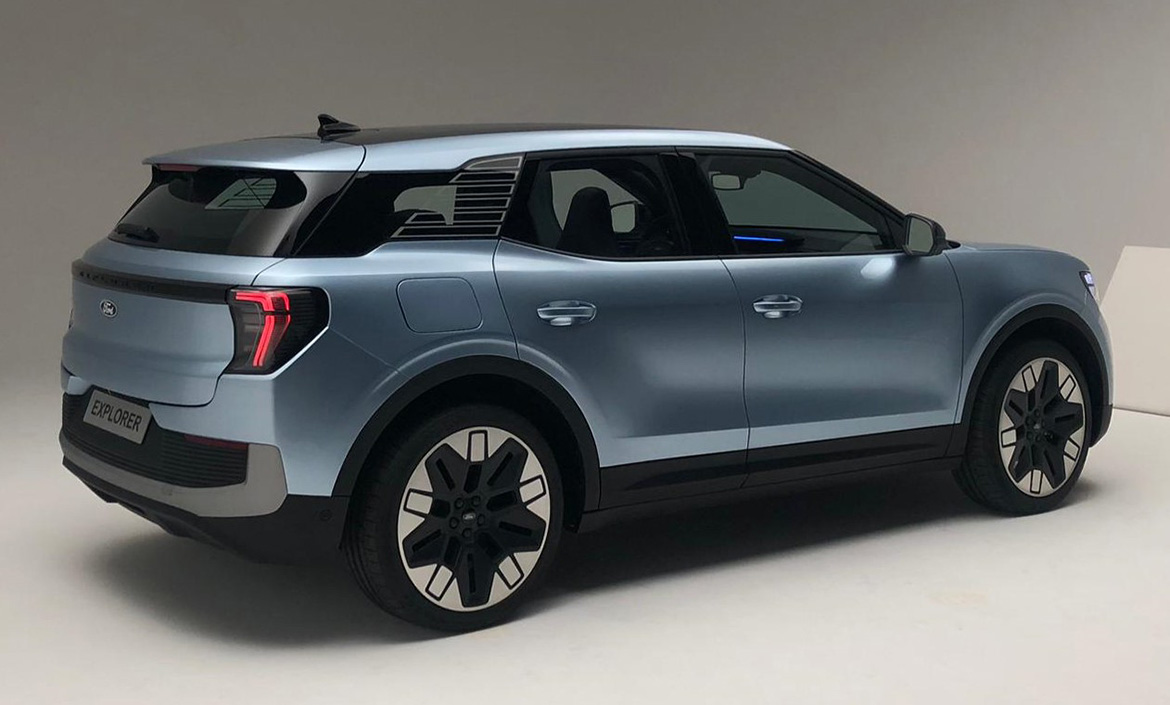Ford presents its first 100% electric vehicle built in Europe: it is called Explorer and is based on the Volkswagen Group’s Meb platform. The mid-size crossover will be assembled at Ford’s electrification centre in Cologne, Germany, following a $2 billion investment. The company expects to sell more than 600,000 all-electric vehicles per year in Europe by 2026. The electric Explorer will be available in two versions with up to 340 horsepower and zero-emission all-wheel drive.
The new member of the Explorer family reinterprets the bold and rugged appeal of Ford’s iconic SUV specifically for European customers. A powerful stance and strong visual identity reflect the American heritage, while the design is futuristic and, given the electric drive, driven by the principle of aerodynamic efficiency. The front grille has given way to a fully enclosed element in body colour, in the centre of which is the restyled Ford logo. The U-shaped skid plate increases the perception of width, framing the front end and helping to guide the airflow towards the front wheels. The rear offers compact and dynamic proportions, while black A-pillars and unique C-pillars give the roof a floating appearance.
The interior of the electric Ford Explorer offers upper-segment space. The adjustable 15-inch central Ford SYNC Move 1 touchscreen is the key to the cabin’s innovative flexibility and can be raised and lowered smoothly through an arc of more than 30 degrees. The adjustable screen conceals the My Private Locker, a secure place to keep personal items. The 17-litre MegaConsole makes efficient use of the space created by the absence of conventional gearstick controls. Large enough to hold a 15-inch laptop computer or three 1.5-litre bottles side-by-side, the glovebox features a divider that doubles as an ice tray. The new Explorer also introduces a haptic trackpad to control functions such as audio system volume and parking technology. Sporty and welcoming, the interior features a wraparound cockpit effect that merges the instrument panel with the doors as a single design element.












